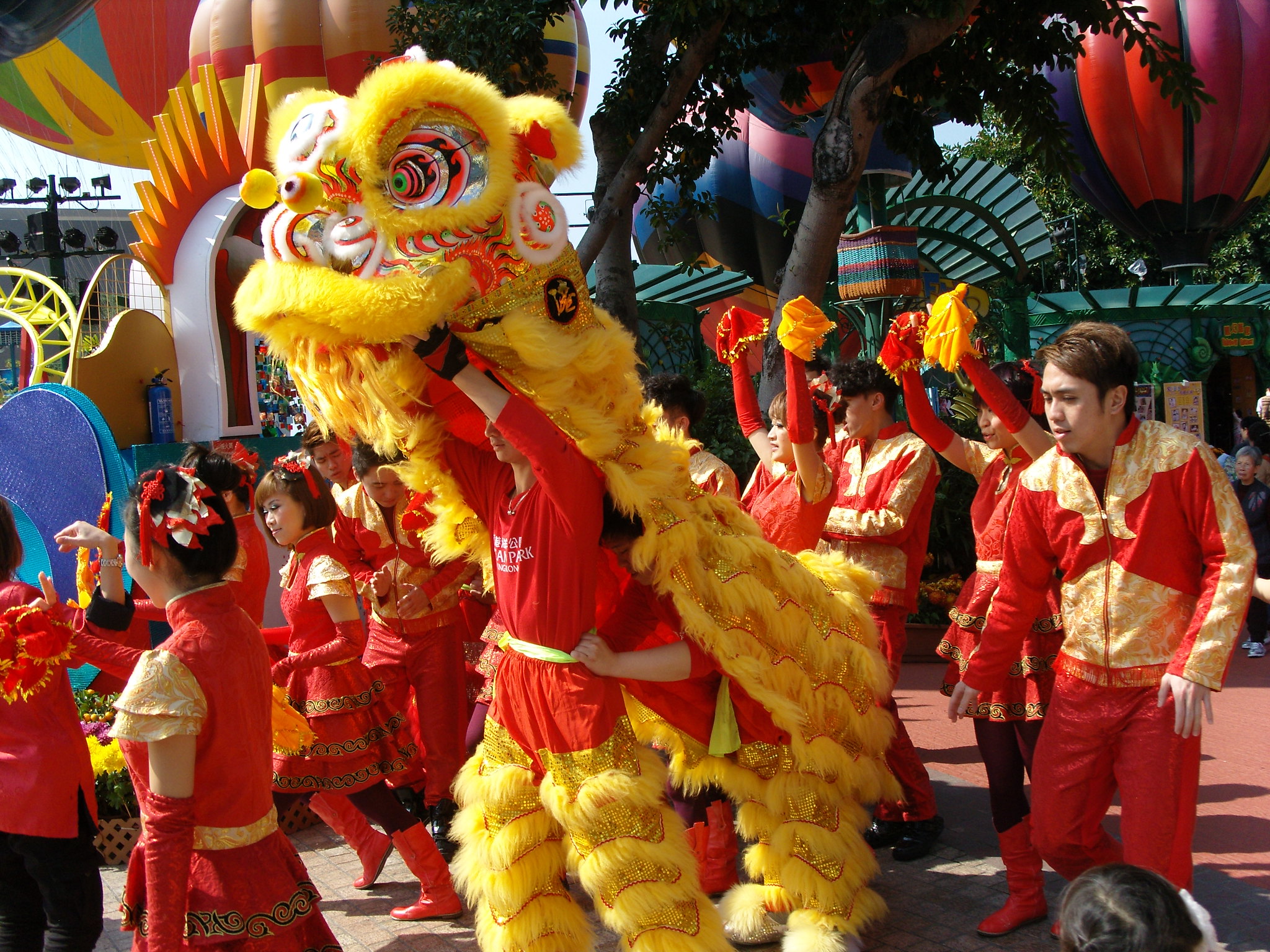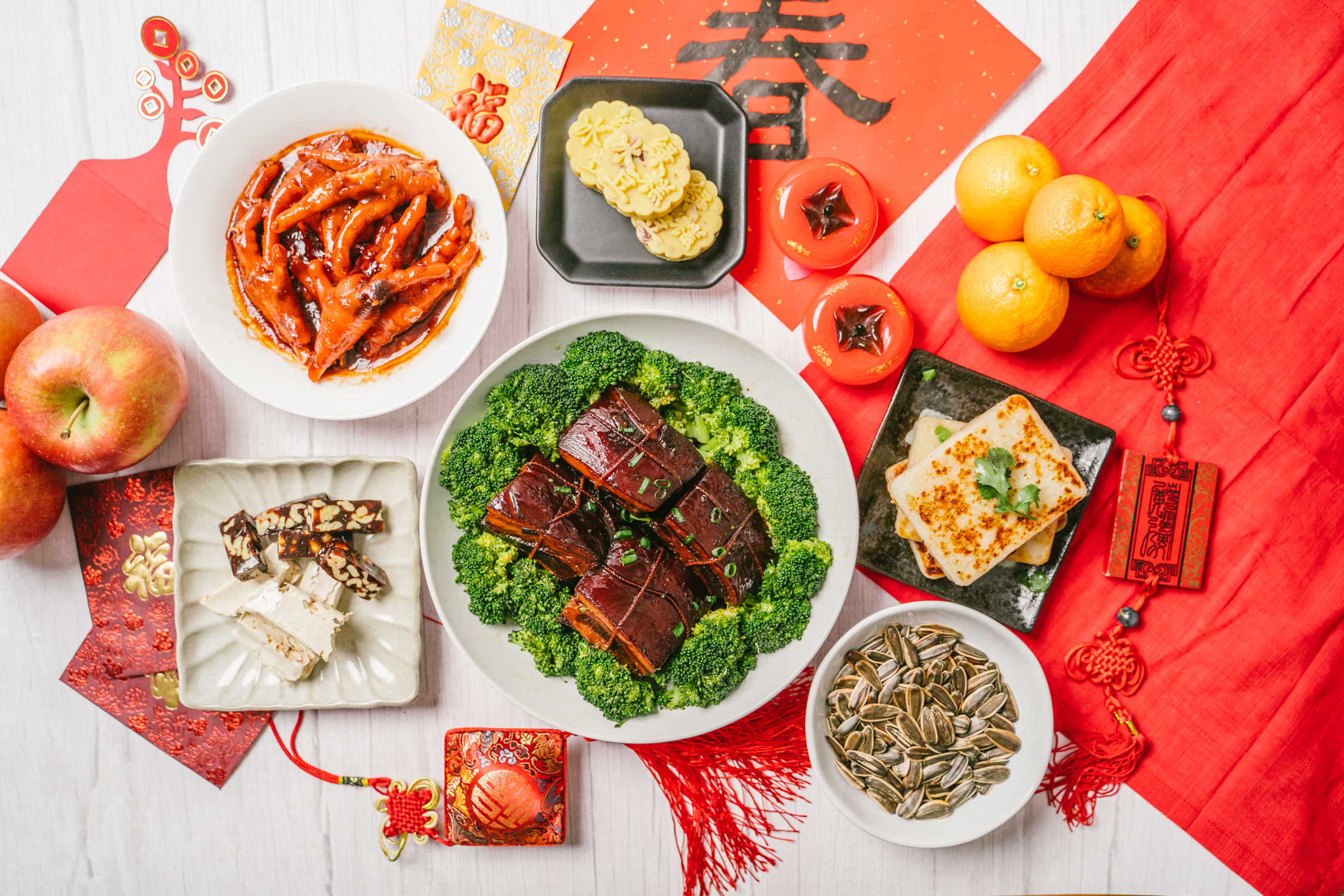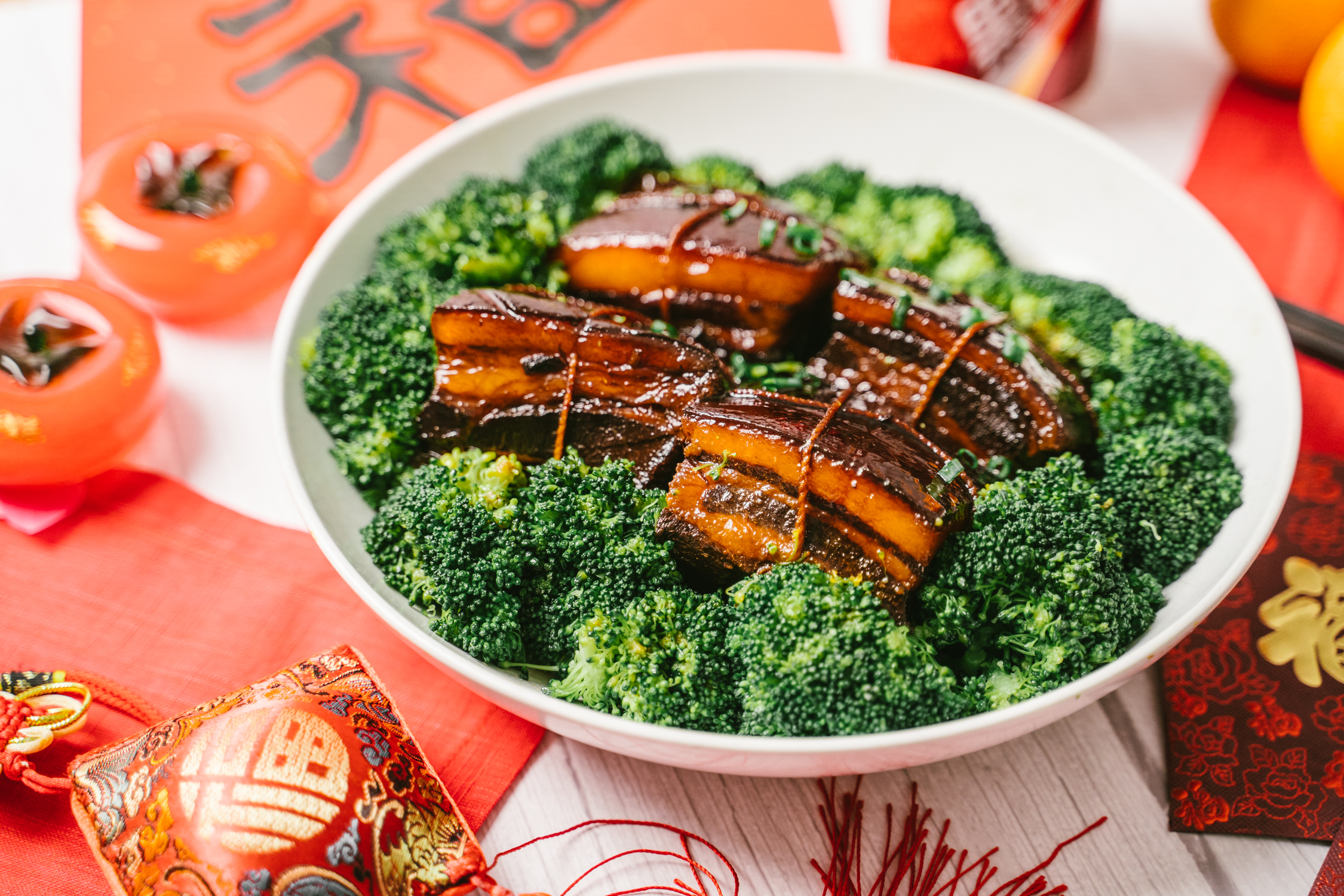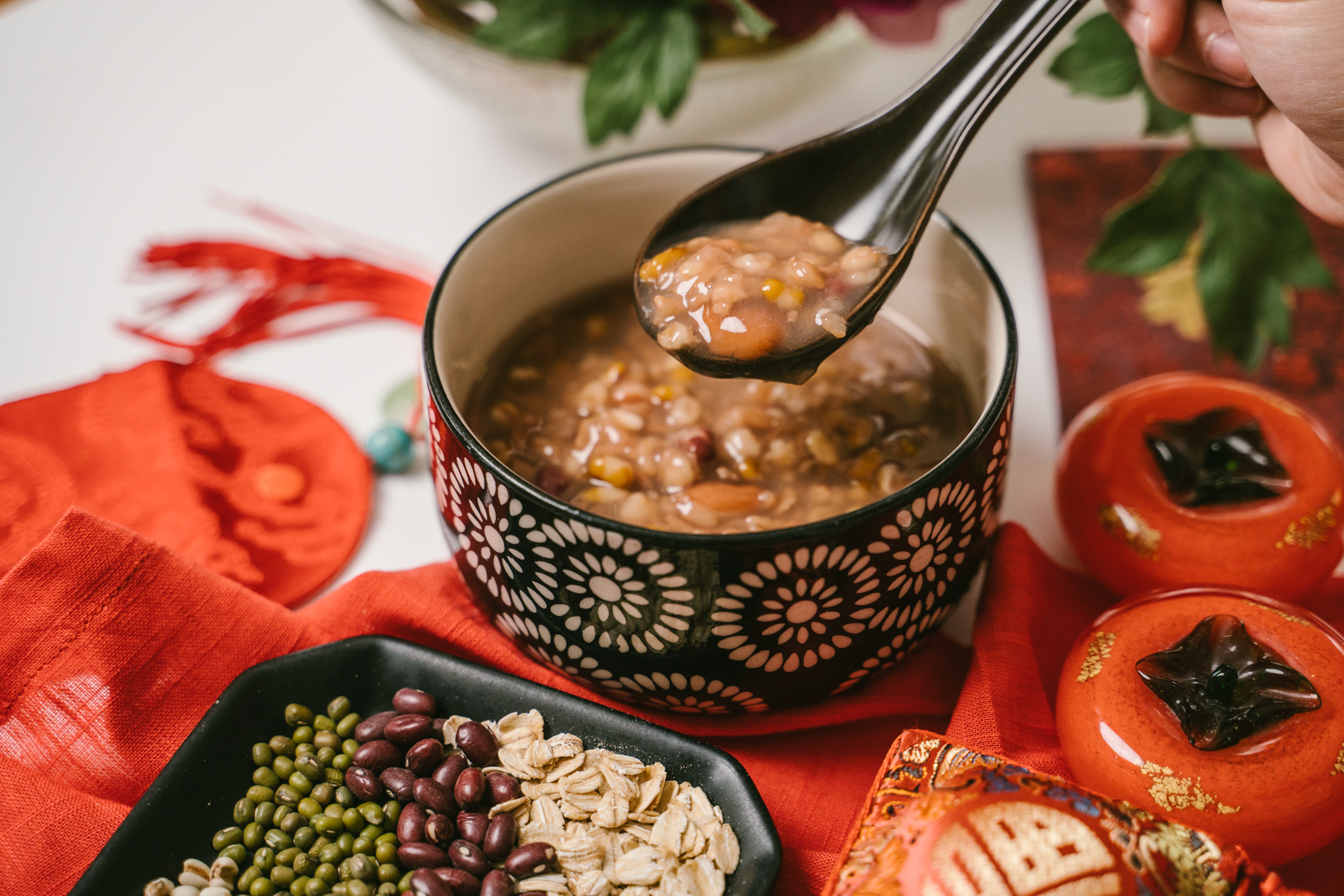The Marvelous Myths Behind Chinese Lunar New Year
Editor’s Note: This post was made in partnership with the amazing people over at Weee!
Spring Festival, or the Chinese Lunar New Year, follows the lunisolar calendar and celebrates myths, auspicious food, and massive family gatherings.
By the moon: In the Zhou dynasty (1046–256 B.C.E.), the longest dynasty in Chinese history, the legend of a mythical beast that resembled a lion face on a dog’s body with giant sharp teeth or horns named “Nian” (年兽) emerged.
- Shaolan Hsueh, a Chinese entrepreneur and author, explained in Ted that villagers would hide from the fearsome beast as it devastated their fields, crops, livestock and ate its fill of the people. This continued year after year until one day a fairy, disguised as an old beggar, was shown kindness from an old woman. He said he knew the secret to driving Nian from the village for good. On that night, the fairy fixed red talismans to her door, weakening the beast as it approached. Before it could attack, the fairy threw a couple of bamboo sticks into a bonfire that released a crackling boom and frightened the beast away. The townspeople rejoiced after returning the next morning, and the fairy floated away, gifting them with this newfound knowledge.
- The tradition to light firecrackers and fireworks, wear and decorate homes with red, and perform lion dances over booming drums and cymbals continues and evolved into a feat of warding off bad luck and monsters while celebrating. To allow more good fortune to enter the home, it’s swept and cleaned before the holiday arrives.

Present-day celebrations: Through the dynasties, this yearly tradition persisted and grew more festive with the introduction of dragon dances, lion dances, stilt-walking, and more social and family gatherings.
- In 1996, a weeklong state holiday for the Lunar New Year was established in China, which is now called the Spring Festival.
- Massive amounts of people would travel and visit family members for the new year in a phenomenon named Chunyun.
- Titled the “largest annual human migration” in the world, 3 billion travelers were estimated to travel throughout a 40-day period at the beginning of 2020, according to National Geographic.
- The Spring Festival is the longest Chinese holiday, lasting 15 days and ending with the Lantern Festival.
-
- At the height of the New Year, the festivities wind down with one final radiant display of revelry.
- The Lantern Festival is spent cheerfully with a myriad of activities such as lantern-lighting, viewing intricate lantern displays, moon-gazing, solving riddles from Song Dynasty scholars, watching lion and dragon dances and eating glutinous rice balls.
- The holiday has over 2,000-year-old ties to the Han Dynasty and was, at one point, thought to be an ancient Chinese Valentine’s Day.
- Rigid night curfews were imposed and women were especially discouraged from leaving their homes. However, the Lantern Festival was an appreciated exception — as the curfews were lifted, men and women were allowed to mingle, stroll and talk. Tales of wild romances sprung up from it, telling of couples who became enamored with one another and fell in love.
- Sacrificial ceremonies in the present day include offering food and burning joss sticks, paper, spirit money and incense for one’s ancestors.

- Red packets, red envelopes, or 红包 (hóng bāo), are filled with New Year’s money and given from elders and parents to children and the unmarried.
- The origin behind why red packets are given is a mystery, but one legend told the story of an evil being named “Sui” (祟), whose touch was tainted. Clad in darkness with colorless hands, it would target children in their sleeping quarters on the night of New Year’s Eve. As the creature entered their rooms, it would stroke their heads and inflict sickness on them. To protect their children from harm, parents guarded them until the next day. One year, a couple tried to stay awake deep into the night with their child, giving him a shiny copper coin wrapped in red paper to play with. However, the night grew long and they all succumbed to their fatigue, falling asleep. The creature then appeared and reached for the child. Just as Sui’s colorless hands almost grazed the child’s forehead, the coin burst golden beams of light from its red paper. It frightened the creature away and protected the child. Word reached the rest of the village and, from then on, everyone covered coins in red paper to give to their children.
- Red packets with auspicious phrases and symbols are still given to children now, along with blessings and good fortune for the New Year, while warding off evil spirits.
- Digital red packets are also given on messaging platforms like WeChat, where they can be sent to family overseas and games like “red packet snatching” (抢红包), “Red Packet Chain Game,” and lottery red packets can be played, according to Hong Kong Free Press.
- Traditions are taking a turn, however, as more of the younger generation in China, particularly Chinese college students, are opting to spend the week-long holiday with friends instead of family, relaxing from work, browsing the Internet, watching TV and sleeping in, according to History.

Traditional foods: Among the myriad of highlights of the Spring Festival, the delicious traditional feasts might be the most important. A great deal of these foods have similar auspicious meanings behind them, and that in part may have to do with how, in the past, “starvation was the main cause of death. Getting wealth, fertility and long life was what they wanted,” E.N. Anderson’s “The Food of China” via NPR offered. Here are some of the many dishes that could be found on the dinner table:
- Dumplings, pan-fried or boiled, represented wealth and were thought to bring fortune because their shapes could be molded to resemble a gold ingot, the currency used in ancient China. Traditionally made in northern China, the early and modestly stuffed dumplings were used to stretch out what little meat was left in winter during a time of starvation, and have now spread throughout the world.
- Long noodles have a more literal meaning signifying a long life and the wish for longevity. A specific type of this noodle is the longevity noodle, where slurping over biting is the tradition, according to Time Out Shanghai.
- “Nian gao,” a sticky glutinous rice flour cake, has come to be “symbolic of attaining success in one’s career,” according to William C. Hu’s “Chinese New Year: Fact & Folklore” via Northwest Asian Weekly.
- Dongpo Pork, a braised pork belly dish from Huangzhou, was named in honor of a Song Dynasty official Su Dong Po (Su Shi). He was renowned and beloved by the people of the state, however, was eventually banished for speaking out on strict reforms for the working people. A legend tells of how he created the dish on accident, after letting it caramelize and braise for too long. He cut the pork into cubes and gave it to the West Lake workers he oversaw, and they praised him for his benevolence and the savory discovery.
- Eight Treasure congee, a traditional rice porridge enjoyed during the Laba Festival before the New Year, contains the “lucky” number eight. The favored number sounds like the character for “prosper” or to “get rich.”
- At one such occasion, a coveted phone number ending in five 8s was sold to the highest of 5,000 bidders in Beijing for $325,000, according to the New York Times.
- The porridge contains a variety of eight nuts, beans, and dried fruit, mixed together with sticky or brown rice. Highly nutritious, and an easy comfort food, it’s popular in northern China.
Need to put together your own delicious treats for a Spring festival feast? Order all the food items you’d need from our brand partner Weee! Have premium quality ingredients delivered right to your door for a safe and easy Chinese New Year! Offer: $10 off first order and free delivery on orders $35+.
This post was created by Weee! with NextShark.
The post The Marvelous Myths Behind Chinese Lunar New Year appeared first on NextShark.
✍ Credit given to the original owner of this post : ☕ NextShark
🌐 Hit This Link To Find Out More On Their Articles...🏄🏻♀️ Enjoy Surfing!





















Post a Comment